Top 5 most mysterious paintings of the Tretyakov Gallery
Categories: Culture
By Pictolic https://pictolic.com/article/top-5-most-mysterious-paintings-of-the-tretyakov-gallery1.htmlUnderstanding art is not as difficult as it seems. To do this, it is not necessary to study for several years as an art critic. It is enough to talk with experts who will tell you about the famous paintings so that later in the museum they can be seen from an unexpected side. Natalia Ignatova, lecturer of the Level One educational project, a certified art historian, revealed the secrets of five of the most mysterious paintings of the Tretyakov Gallery. We thank the Level One project for the material provided. Thanks to the work of the guys, many will learn to understand the beautiful and get a buzz from it.
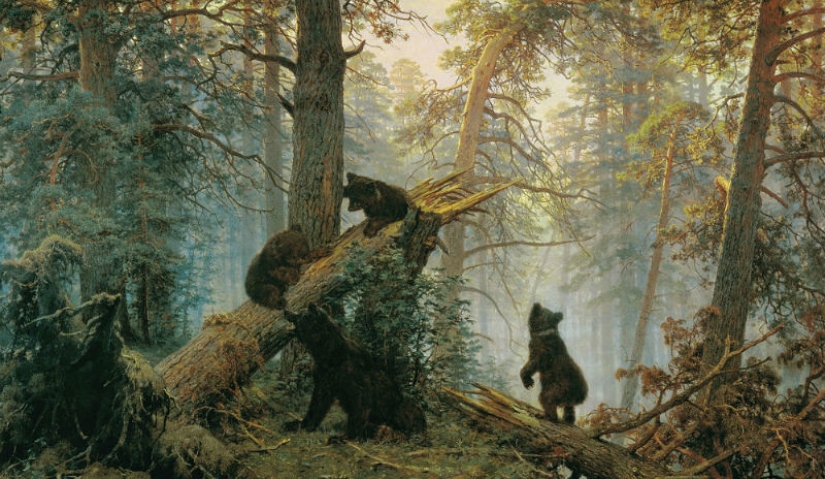
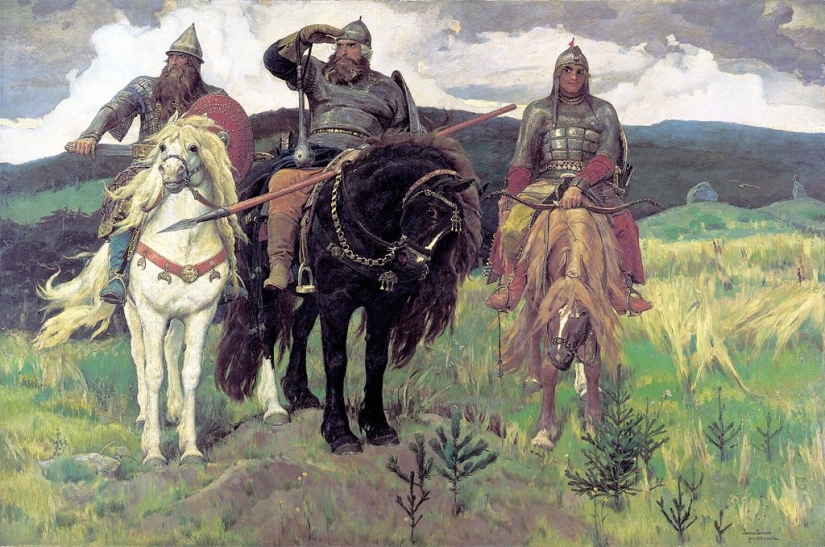
Viktor Vasnetsov devoted a significant part of his life to the painting with three heroes of epics and fairy tales. The canvas is one of the record holders of the Tretyakov Gallery in terms of the number of years spent on its creation. The artist made his first sketch in 1871, and finished his masterpiece only in 1898.
Contrary to popular belief that the heroes went out into the field just to walk and survey the surroundings, they are ready to rush into battle. The enemy is standing in the distance, as if behind the viewer's back, his presence is evidenced by the gathering clouds, hawks that are anticipating prey, but the main thing is the extended sword of Dobrynya Nikitich and the bow ready to shoot in the hands of Alyosha Popovich. The prototype of Ilya Muromets was the Emperor Alexander III, the artist painted Dobrynya Nikitich from himself, but the prototype of Alyosha Popovich is reliably unknown, it could be a commoner — Vasnetsov in the process of working on the picture drew many portraits of peasants, cabmen and blacksmiths, who, as it seemed to him, were somewhat similar to the famous fairy-tale characters.
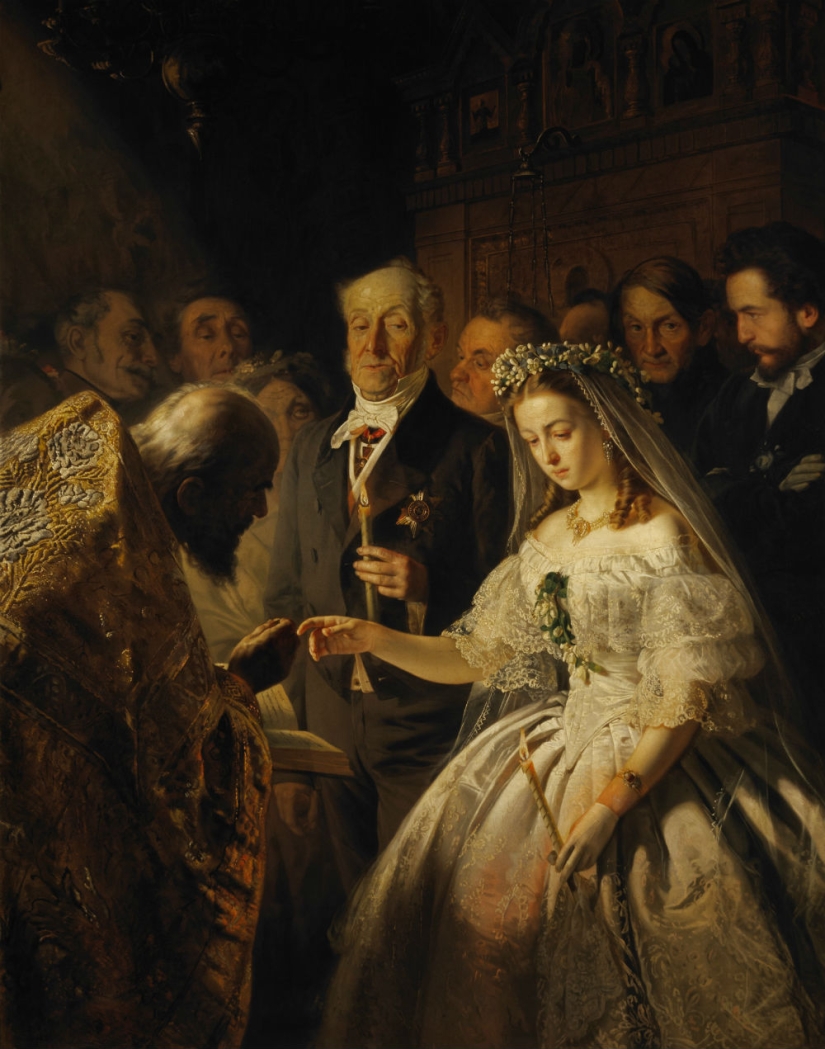
The plot for the painting was suggested to Vasily Pukirev by his friend, the artist Pyotr Shmelkov. He was well aware of the mores of wealthy and influential people, for whom marriages of convenience were commonplace. Pukirev thanked his friend for the idea by depicting him on the right behind the bride's back. The painter himself is also present in the picture: he painted himself in profile in the image of the bride's best man with crossed arms. Initially, the artist did not plan to put himself on the canvas: in his place was a friend whose beloved was married to an elderly man. Moreover, Pukirev's friend, due to family circumstances, was forced to attend that unpleasant wedding for himself as a best man.
Subsequently, a friend asked the artist to remove him from the canvas so that mutual friends and relatives would not remember this story once again. Then Pukirev wrote himself instead of him. If you visually divide the canvas diagonally from the upper right corner to the lower left, then the bride and her two friends will be on the right side. While on the left there are relatives and friends of the groom, deliberately depicted as unpleasant people. Thus, the canvas is divided into two semantic parts, as if personifying good and evil. Moreover, the priest turns out to be on the side of evil. This technique testifies to the artist's commitment to the principles of realism, thereby raising the question of the role of the church in society.
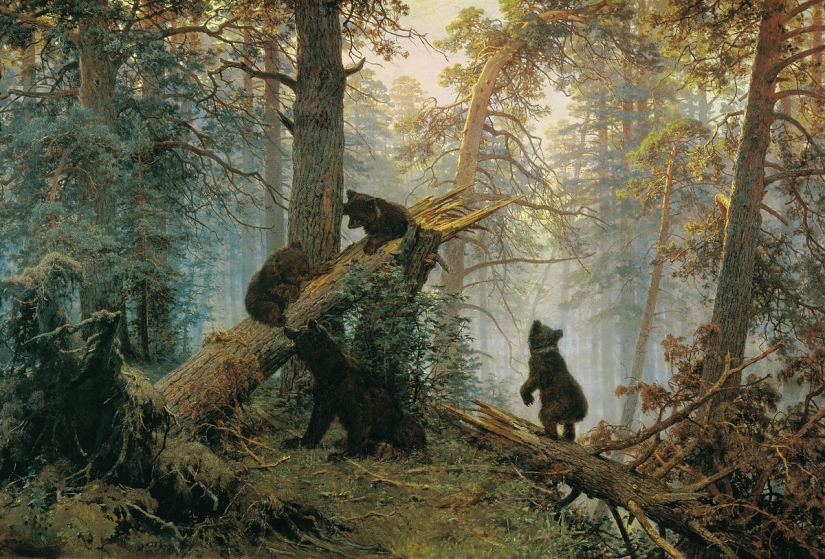
Not all lovers of sweets know that two artists worked on the famous canvas, which was then replicated on candy wrappers. Shishkin was in charge of the forest, and Savitsky was in charge of the bears. Moreover, the plot of the picture was invented by Savitsky. Initially there were two bears, but then their number grew. Collector Pavel Tretyakov bought the painting for 4 thousand rubles.
However, it is believed that the collector did not like Savitsky's work. According to legend, Tretyakov said: "What terrible bears!" And Savitsky's last name was smeared on the canvas: according to one version, Tretyakov did it, and according to another — the artist himself, who was offended, not enduring criticism from the gallery owner. Shishkin's skill is expressed in the illumination of the forest: the first rays of the sun are expertly painted on the tops of the pines, which viewers usually do not notice, distracted by the figures of bears.
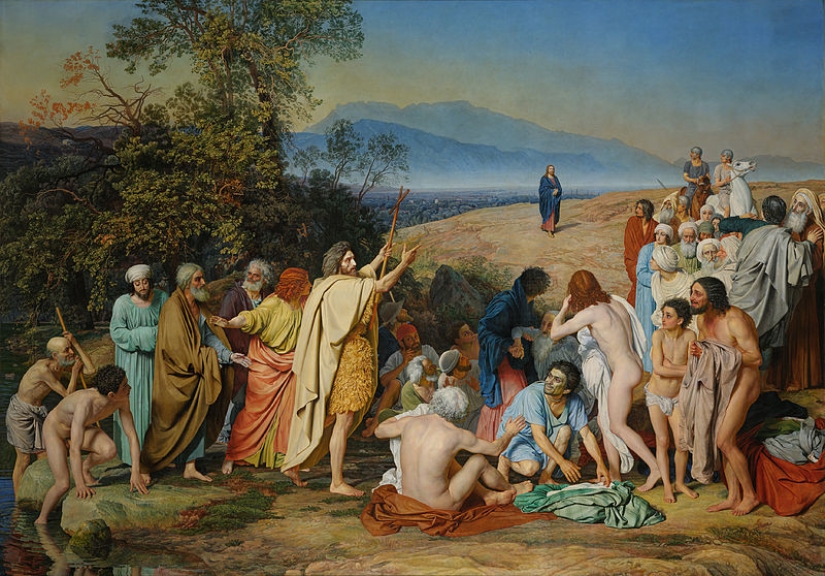
Alexander Ivanov painted the first significant picture on a biblical plot in 1834. It was "The Appearance of the risen Christ to Mary Magdalene." And three years later, in 1837, he began to create the main work of his life - the epochal canvas "The Appearance of Christ to the People". The artist worked on the painting for 20 years in Italy. In the process of creating the canvas, he made more than 500 sketches and sketches. The fact that Ivanov was working on a monumental canvas was known to all connoisseurs of painting in Of Russia. In May 1858 , the painter decided to send the painting to Saint-Petersburg. According to legend, during the voyage the ship was overtaken by a strong storm. The artist rolled the canvas into a tube and raised it over his head — he preferred not to see the death of his creation, but to drown himself if the ship went under water.
However , the canvas still arrived in St. Petersburg, where it was exhibited in one of the halls of the Academy of Arts. The public took the picture coldly — there were complaints about the too small figure of Christ, and about the water, depicted not in an academic manner, but in free strokes. It is curious that Ivanov was ahead of his time in this sense, because later impressionists will work in a similar manner. In addition, the canvas turned out to be unfinished. In the left part, an old man in a white loincloth is visible, which is reflected in the water by a red spot. In the sketches, the bandage was really red, and the artist, apparently, simply forgot to repaint it. A month after the presentation of the work, Ivanov died, and a few hours after his death, Emperor Alexander II purchased the painting for 15,000 rubles. Despite the fact that the amount was substantial, initially the artist, who devoted half of his life to this work, counted on a much larger fee, but, unfortunately, did not have time to receive even this money.
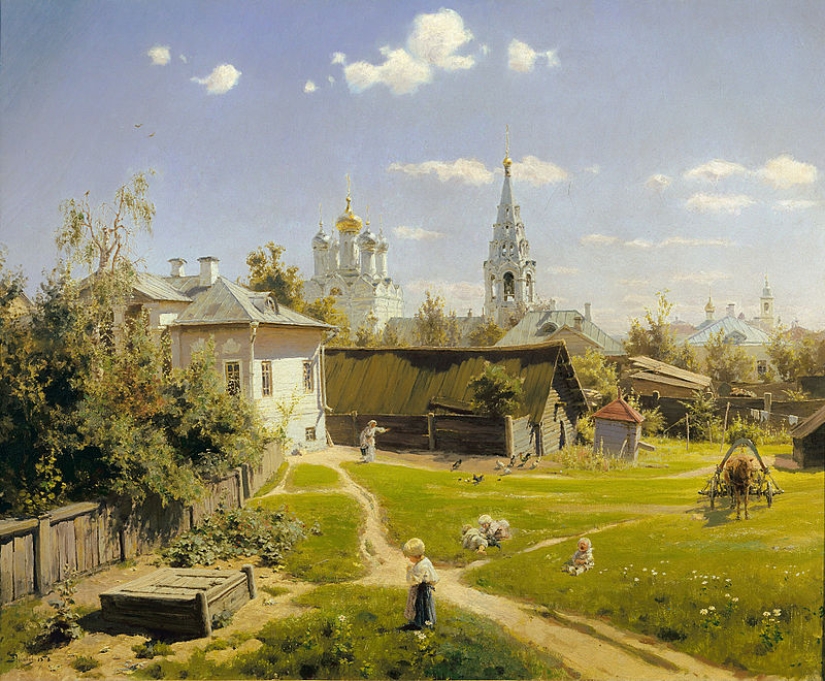
The painting of the peredvizhnik Vasily Polenov is closely connected with his other work called "Grandmother's Garden". Both canvases depict the same house in the Arbat district, only from different sides. Polenov wrote his most famous work after moving to Moscow from Having settled in one of the apartments of the house at the intersection of Durnovsky and Trubnikovsky lanes near the Church of the Savior on the Sands.
The view depicted in the painting opened from his window. Moreover, it took Polenov quite a bit of time to create a masterpiece: in fact, it is an etude written from nature. For the first time in the history of Russian painting, the artist combined two genres — household and landscape. The audience, tired of the gloomy and depressive canvases of the wanderers, accepted the cheerful sunny picture with delight. No one was confused even by the garbage dump depicted in the lower left corner, which most viewers take for a well.
Recent articles

Soon the New year, which means it's time to review Christmas movies, buying gifts, planning the celebration and decorate their ...

An old tradition to eat alcohol, kebabs, sausages and other meat products obviously there for a reason. Our ancestors, having a ...

Artists perpetuate the images of his muses in paintings, sculptures and other works. Them they draw inspiration for creativity. ...